It’s getting more and more autumnal, the first starry nights are already getting really cold and most annual plants are slowly withering away. You should now make your winter preparations on the balcony and protect your plants from frost damage. I always keep a close eye on the weather forecast during the transition period to see if frost is predicted for my region. If only one night of frost is forecast, I protect the plants with newspapers, cardboard, bubble wrap or fleece and leave them on the balcony until a longer period of frost is forecast. The light conditions outside are always better than the light conditions in the winter quarters. To be on the safe side, simply keep a winter fleece ready on the balcony as winter preparations at the beginning of the transition period, which you can throw over the sensitive plants if there is a frost warning.
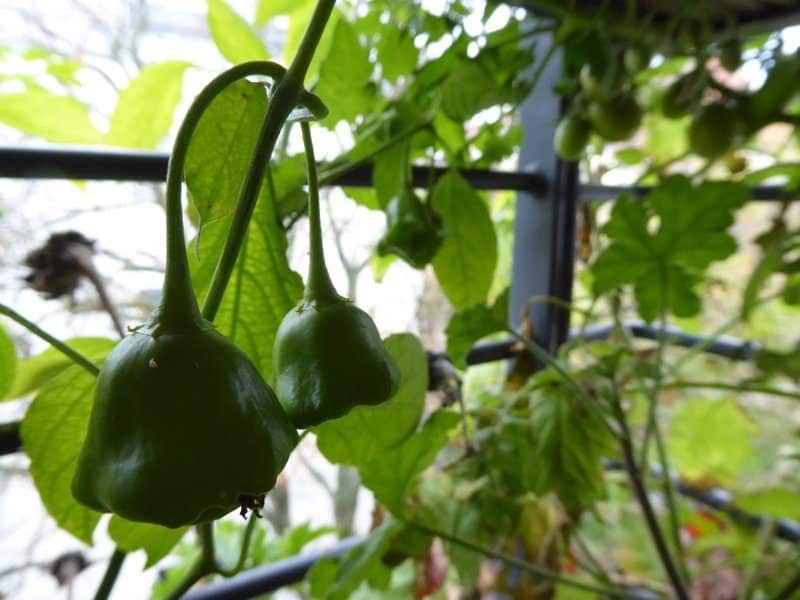
1. the right location
Not all plants require the same conditions in winter. The conditions a plant needs for overwintering can be most easily deduced from its region of origin. Native wild plants and herbs are adapted to the local weather conditions and can remain on the balcony. This is a huge advantage of native wild plants and herbs. They are also the basis of life for our insects, including butterflies, throughout their entire life cycle. We are therefore doing a lot for biodiversity.
Especially our native herbs such as Wild garlic, Parsley, Oregano, Thyme, Peppermint, Chives, Mountain savory, Lovage, Lemon balm, Hyssop tolerate temperatures down to ‑15 ˚C and can overwinter on the balcony accordingly.
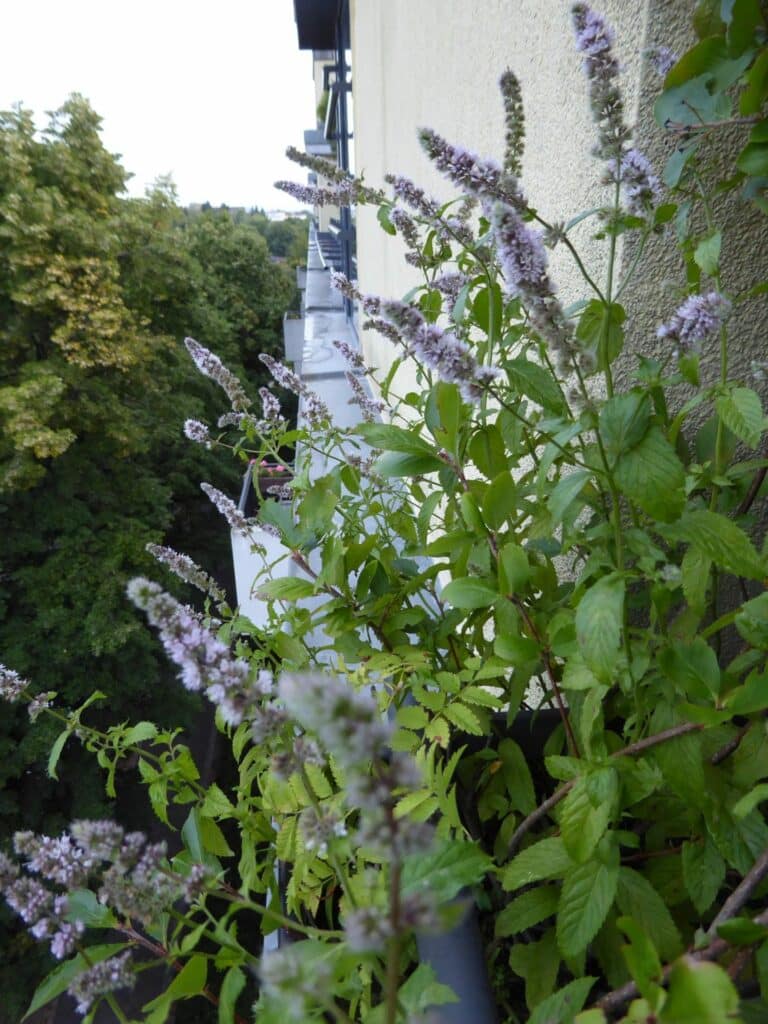
Mediterranean herbs such as Rosemary (of which there are already frost-hardy cultivars, but young rosemary plants should still be protected in the first winter), Laurel, Stevia or Pineapple sage do not tolerate frost. They prefer a temperature between 5 — 10 ˚C in winter. Evergreen plants need a bright place such as a stairwell/winter garden or the coldest room in your home, e.g. the bedroom. All plants that lose their leaves prefer dark winter quarters.
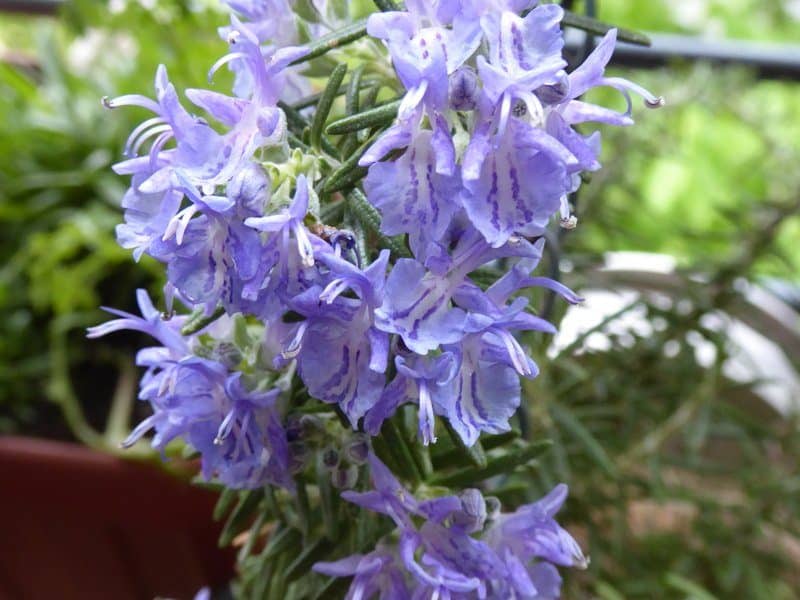
When I buy herbs, I always keep an eye on the frost resistance of the plant and consider whether it can overwinter outside on the balcony when I buy it. The space in the winter quarters is limited, moving them into the winter quarters takes time and buying new herbs every spring is out of the question. It is therefore best to buy native herbs or frost-hardy cultivars at the time of purchase. Our insects prefer native plants. In addition, their Frost hardiness a great advantage. Our native wild herbs have the best chance of surviving the winter, even in balcony boxes, even without hanging them up. You can easily find out whether they are native plants using the Plant search engine NaturaDB check.
It is still the cheapest — for Protection from wind and rapid cooling — place all plants as sheltered as possible. To do this, place the pots and containers close to the warming house wall, preferably in a corner sheltered from the wind. Remove the balcony boxes from the parapet and place them on the ground, suitably wrapped. In our experience, on sheltered balconies, in cities, in temperate locations and winters, leaving the planters of frost-hardy plants in place works well. On some overcrowded balconies, it is no longer possible to move them for reasons of space. The plants survive the winter, and our experience has been very positive.
The perennial crops like Paprika, Chilli and Physalis can overwinter well in a cool stairwell or bedroom or in the cellar. Likewise Fuchsia, Scented geraniums- or Geraniums. Cut back lightly, water lightly. Here you can read about overwintering the Shrub basil as cuttings or the entire pot in a bright location.
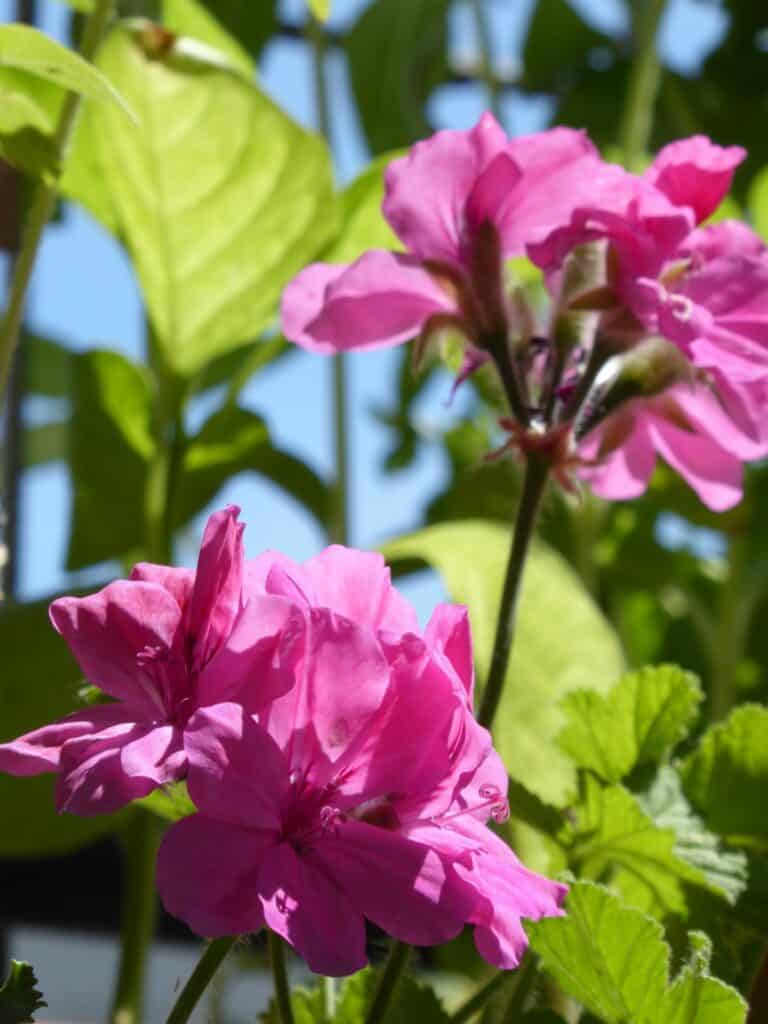
2 . Protect from drying out
All plants also need a little water in winter.
Plants that overwinter indoors should be kept slightly moist. The right balance is important: too little water causes the plant to dry out, too much water weakens the plants, attracts flies and aphids and can lead to mold.
However, plants that overwinter on the balcony also need moisture. As soon as the leaves warm up in winter, the metabolism starts. However, if the soil is too dry, the plant will dry out. Plants often dry out over the winter rather than freeze to death. This fact is not so well known. This is why plants should be watered extensively before long periods of frost. Even if the temperature temporarily rises above zero during the winter, watering the plants again will help prevent damage.
Make sure that the excess water drains completely from the planter, otherwise the waterlogging can cause the planter to burst when it freezes. If you use balcony boxes with water reservoirs, be sure to empty the water before frost periods! I don’t do this myself, nothing has happened so far, but I don’t fill the water reservoirs in winter.
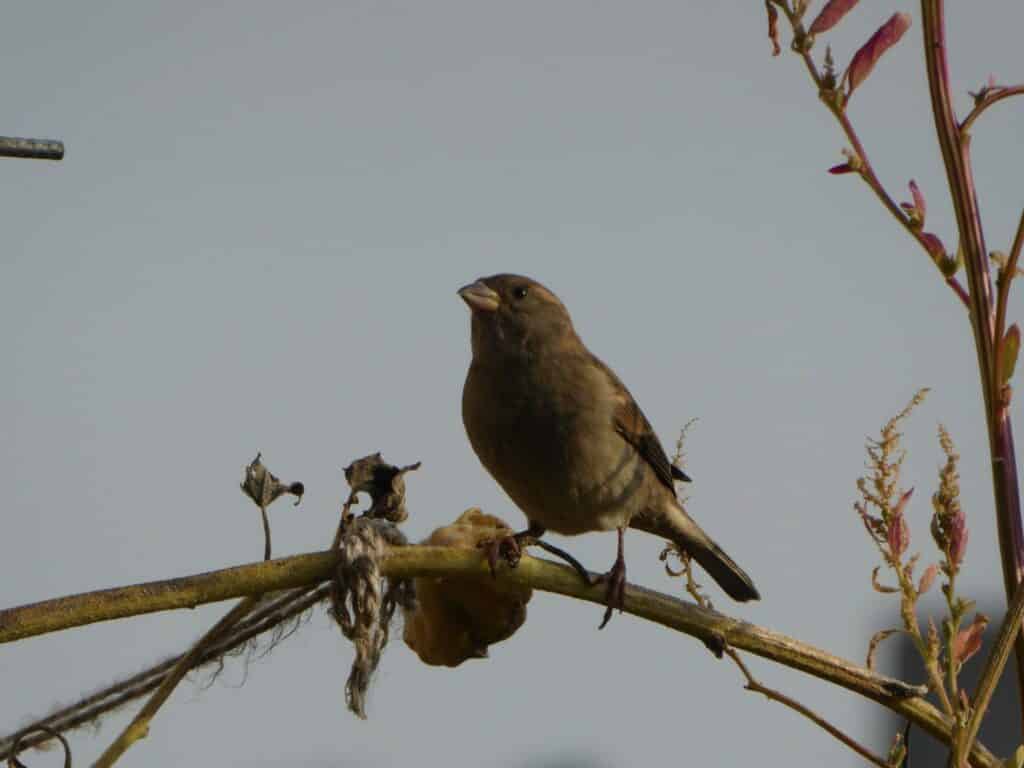
3. frost protection for the roots
To protect plants from freezing through, a thick coat helps to protect them from the cold. Fleece and jute sacks filled with leaves are very suitable for planters. However, raffia mats or packaging material such as bubble wrap and cardboard can also be used. It is important to wrap the planter carefully all around.
The soil should also be protected from the cold from above. A layer of leaves or coir mats is suitable for this, as this keeps out the cold and still allows air to reach the soil surface. It should not start to rot under the cover, so air must be able to reach it. Covering the surface with brushwood is also a tried and tested method.
In addition to the coat, the plants also need warm winter boots. Especially if they are on a balcony that is exposed to the wind. The simplest option is to place an approx. 2 cm thick polystyrene sheet or bubble wrap under the plant pot. I always have a box in the cellar in which I store the bubble wrap, which is then used as winter protection. That way I don’t have to start searching under time pressure when frost is on the way.
4. frost protection for branches and leaves
To protect the leaves and branches of the plant from cooling down too quickly and the resulting frost damage, hoods made of fleece or jute sacks are suitable. These are carefully pulled over the plant from above and closed at the trunk with a ribbon. For the plant, this protection from direct sun and cold is like a blanket of snow, stabilizing its natural rhythm.
During very severe frost periods of below ‑15˚C, bubble wrap also provides good protection for the above-ground part of the plant. However, it must be wrapped very carefully to prevent icy air from passing through. As soon as the temperatures rise again, however, the film must be removed, as its lack of breathability would lead to rot. The alternative Winter fleece is breathable and water-permeable.
5. do not cut everything down!
Under no circumstances should plants be pruned just before winter. Freshly cut surfaces offer no protection against winter temperatures, and if young shoots emerge as a result of pruning, these will also fall victim to frost damage.
The common recommendation is to carefully remove dried leaves and damaged branches before winter, as these provide shelter for “pests”. I do not share this opinion. I am happy about “beneficial organisms”. To ensure that the beneficial insects continue to do their work diligently next year, we can help them through the winter with a few measures. Wilted perennials can remain in the planter, many beneficial insects overwinter in the stems. Some wild bees lay their eggs in thick stems, and the pupae of many moths can be found on wild shrubs and grasses. Leave structurally strong, hollow or pithy plant stems (e.g. blackberry, mullein, thistles, mugwort) as valuable insect nesting aids or attach them to railings or table legs with cable ties, for example.
Does not cut down your plantsThe birds snack on the sunflowers that have finished flowering, the seed heads of wild flowers, the seed heads of your kale and lettuce.
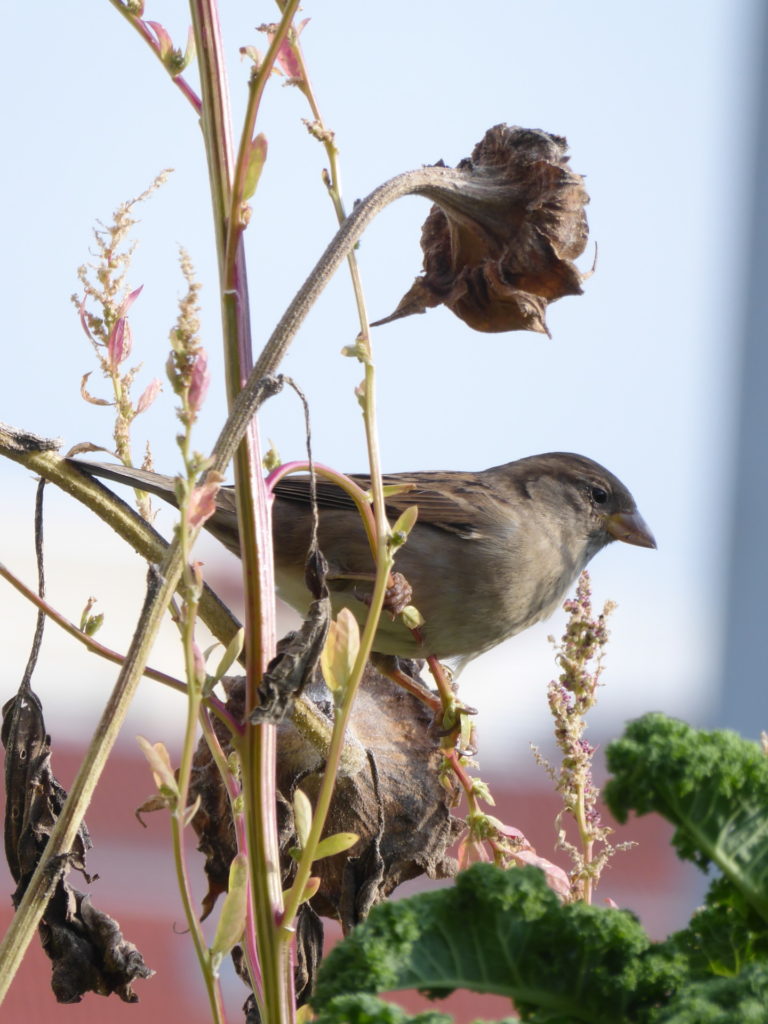

6. cultivation of winter vegetables or green manure
If the soil in your harvested plant pots is not exposed to the weather, but with Green manure, Lawn clippings or Foliage you protect the soil from leaching, compaction and wind drift. This has a positive effect on the soil structure. With green manure, the desired microorganisms have food over the winter.
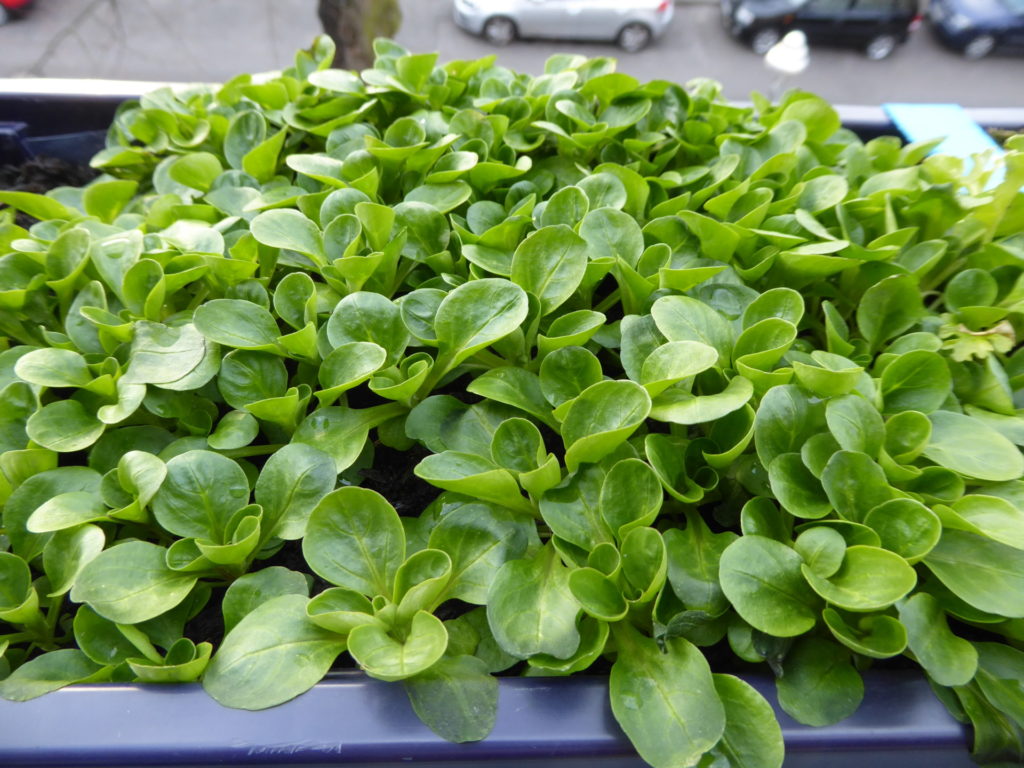
It is common practice to empty all balcony boxes and planters before winter, throw away the soil and buy new soil in spring. Some plants release substances into the soil that are harmful to other plants (keyword crop rotation) and, on the other hand, it cannot be ruled out that pests such as flies will settle in the old soil during the winter and damage your new plants. I don’t share this view. I loosen the soil in spring, remove coarse root pieces and spice up the soil with compost or worm humus. See the blog 5 ways to add strength to old balcony box soil without buying new soil every year. Empty planters can be thoroughly brushed out and stored in a dry, clean place, but this is not necessary.
If you don’t want to completely winterize your balcony: Watch this great video by Annette Hopfes from “Die Kleingärtnerei” about WINTER VEGETABLES on the balcony on. Lots of tips and excellent illustrative pictures. Her current cultivation of winter vegetables on the balcony and in the garden is very impressive.
Here are the best books for Winter cultivation in our latitudes by the expert Wolfgang Palme (expert in the Bio-Balkon congresses 2017 and 2020), who researched this topic for many years.
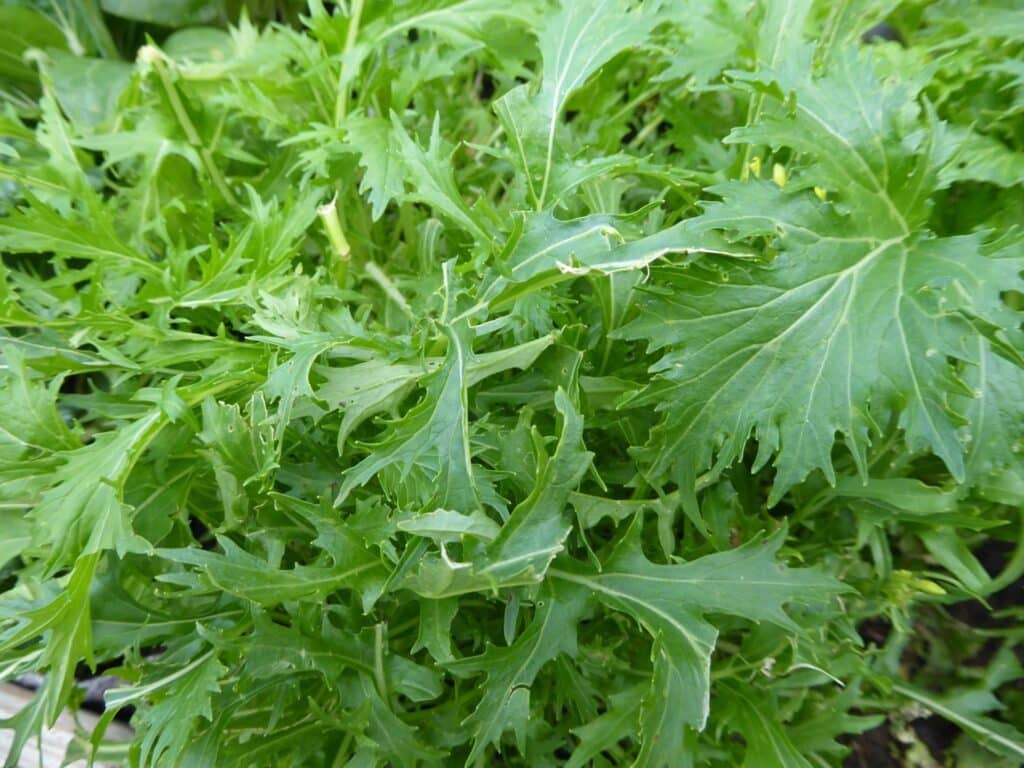


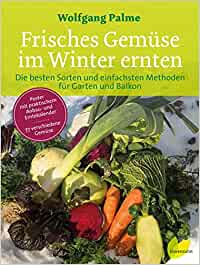








8 Responses
Dear Birgit, I have just read your article and enjoyed the beautiful pictures. I have already cleared my balcony and put the PLANTS that are to overwinter against the house wall. I still have to wrap up the HORTENSIE. I won’t cut the flowers until spring, right? best regards Helga
Dear Helga, hydrangeas are pruned at the end of February to March. This way you can still enjoy the old flower balls over the winter, which make a nice change in the conservatory. . Here at Lubera https://www.lubera.com/de/gartenbuch/hortensien-schneiden-p2679?gad_source=1&gclid=CjwKCAiA6byqBhAWEiwAnGCA4Nn5GUImYfiDeDSIgUXPecEWx3BWzyAGYHKKO3EjfcO-eciRpeVK3hoCBNAQAvD_BwE it is well explained. There are different types of hydrangea. Kind regards Birgit
Thank you very much for the information. I have a blackcurrant bush in a tub on my balcony. This winter I put it against the wall/corner of the house. I think I will cover the crown with a fleece. Will it last through the winter? Do you have any tips for my herbs, should I only cut back the thyme and basil in spring? These two are no longer expanding, I planted them each in a smaller balcony box years ago.
Should I cut them back at all? Many thanks dear Birgit
Dear Heidemarie, the blackcurrant with its healthy fruit is wonderfully frost-hardy. You don’t even need to cover the crown with a fleece. Check on it from time to time in winter to see if it needs some watering. If it is not under a roof, rain will be sufficient. It should be pruned regularly, which you will certainly do. Thyme is best cut back regularly in spring or summer. It tolerates pruning well and then sprouts all the more bushily. In addition, the plants do not become woody and senesce so quickly. Thyme can be left outside, but basil is not frost-hardy and will freeze outside. You must have done this because you wrote that you planted each one years ago. Some basil varieties grow into large bushes, so you sometimes have to prune them a little before taking them inside, otherwise in spring. Kind regards Birgit
Thank you very much dear Birgit for the information. Have a blessed good time. Sincerely, Heidemarie
Dear Birgit
I am an avid fan of your site and your books. Just a small additional comment:
Plants with the Latin name officinalis are not all indigenous. officinalis means that they are medicinal plants that were used in the laboratories of pharmacies, the Offizin. Sage is called Salvia officinalis, rosemary Rosmarinus officinalis, but officinale is also commonly used, such as lovage Levisticum officinale, comfrey Symphytum officinale or jasmine Jasminum officinale.
I think the picture of the Swiss mint is beautiful. As I’m not a big fan of mint tea, I’m happier about the flowers because lots of little creepy-crawlies love them. Best regards Ute Studer
Dear Ute, I made a complete mistake, something else was swirling around in my head. Thank you for writing, I’ll change it in the text. Officinalis naturally refers to the medicinal plant, vulgaris usually refers to the species that have not been cultivated, as they are just as common in nature. These are important terms in plant names, which I will certainly remember now. Thank you very much. Kind regards Birgit
As always : Helpful, instructive and enchanting.
I’m always learning! Thank you for your passion, your love of nature… absolutely infectious.
Kind regards
Ingrid Leidel